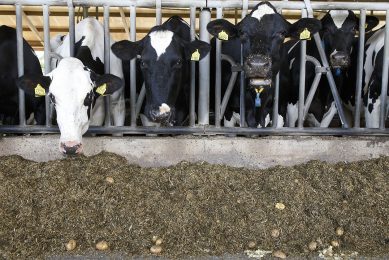Amendment: VMAC reviews Cefquinome
Amendment: The previous published news item on www.AllAboutFeed.net named “FDA rejects antibiotic for use in beef cattle”, dated 16 January contained some incorrect information and has been deleted from this website. Please find the correct information below.
Cefquinome, one of Intervet’s antimicrobials was recently reviewed by the
“Veterinary Medicine Advisory Committee” (VMAC). The review was initiated by FDA
Center of Veterinary Medicine (CVM) with respect to the ongoing approval
procedure of cefquinome for the treatment of respiratory disease in cattle.
No public health concerns
There was consensus of the
VMAC that the Guidance for Industry 152 was correctly followed for cefquinome
and that the overall risk estimate ranking of Medium was appropriate.
Irrespective of the Microbial Safety Assessment a slim majority of the committee
members present considered the evidence provided as inadequate to prove
cefquinome safe with regard to the development of 4th generation cephalosporin
resistance and potential transfer of resistance to humans.
Pursue approval activities
Although Intervet is
disappointed about this outcome, the company is convinced that cefquinome use in
livestock will not create public health concerns due to antimicrobial resistance
and food-borne transfer. Consequently, Intervet will continue to pursue approval
activities. The opinions and advice of the VMAC will now have to be considered
by CVM within the context of the Food, Drug & Cosmetic Act and regulations
governing the approval of the product.
About
cefquinome
Cefquinome is the active ingredient of various Cobactan®
formulations which are licensed in Europe for the treatment of respiratory
disease, mastitis, septicemia and foot rot in cattle and/or swine and has a
track record of many years of effective and safe use. Intervet,
as a responsible sponsor fully supports the prudent use of important
antibiotics. Intervet is participating in European (EASSA) and American (NARMS)
surveillance programs that monitor the susceptibility of commensal bacteria,
which have the potential to become food-borne pathogens. This surveillance data
has yet to show any change in resistance patterns from isolates tested to 4th
generation cephalosporins, in the more than 10 years 4th generation
cephalosporins have been used concurrently in Europe in veterinary and human
medicine.











